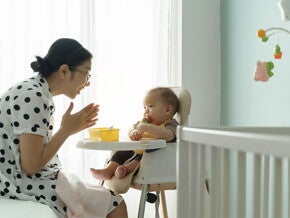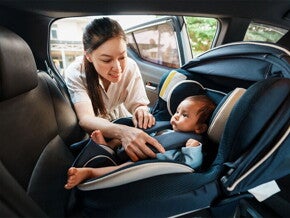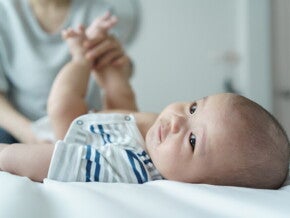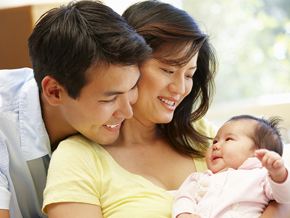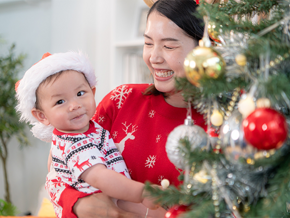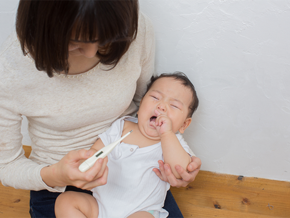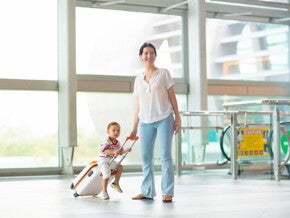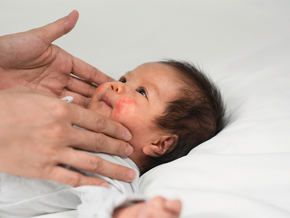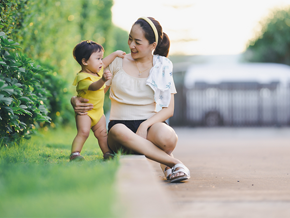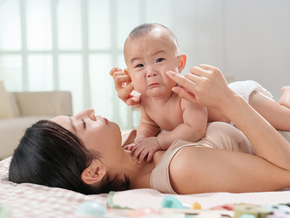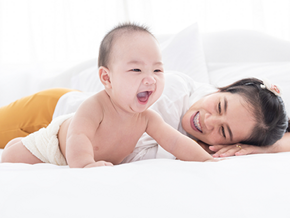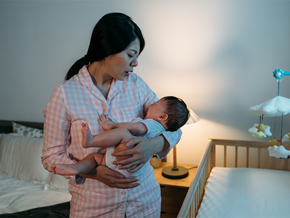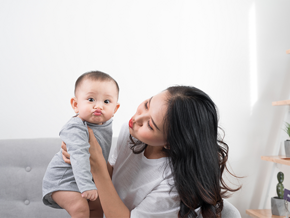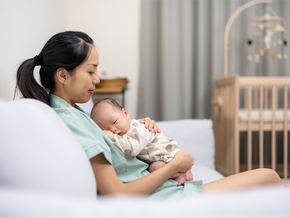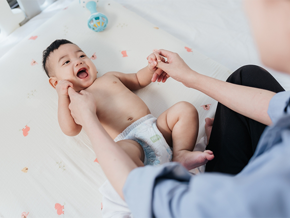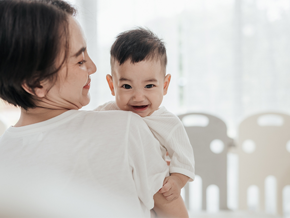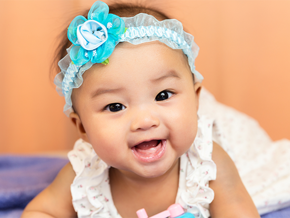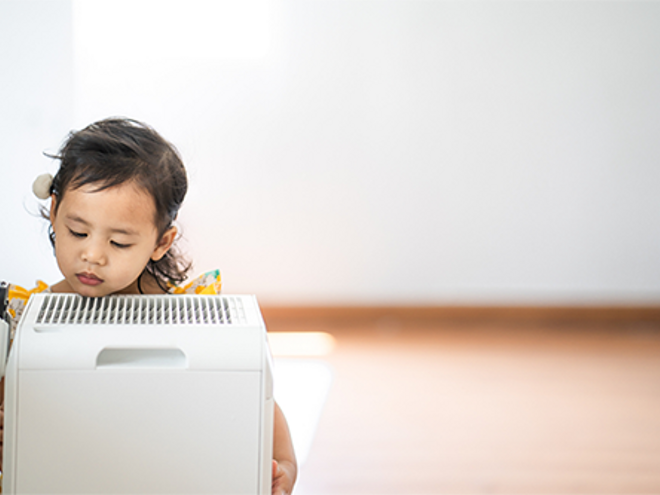
A 2025 study in the journal Environmental Science: Atmospheres, conducted in a Manila maternity ward, found that outdoor pollution can easily seep into indoor spaces, posing a risk to mothers and newborns. That prompts many new parents to ask: Is an air purifier the answer to protect a home's air quality?
Here's a guide to help you decide if this device is a smart addition to your home.
What Exactly Does an Air Purifier Do?
An air purifier cleans the air in a room by pulling it in, pushing it through a filter that traps tiny particles, such as dust, and then circulating the clean air back out.
The most effective purifiers use a high-efficiency particulate air (HEPA) filter to capture 99.97% of particles that are 0.3 micrometers in size. This means it helps create a healthier environment for your little one by providing these science-backed benefits:
It filters out invisible pollutants
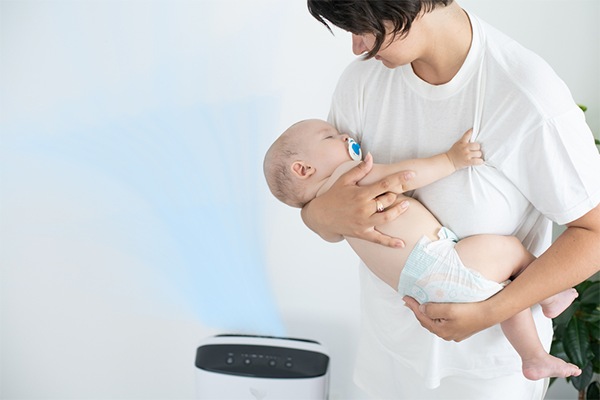
Your baby's developing lungs are extra sensitive. Clean air is crucial for their healthy growth.
An air purifier's main job is to trap the tiny, invisible particles, such as dust mites and smoke particles, in your home's air that can affect your baby's developing lungs.
A 2023 review of 17 scientific studies in Ecotoxicology and Environmental Safety demonstrated the effectiveness of air purifiers, finding that they remove approximately 60% of harmful fine particles (PM2.5) from a room. This directly improves the air your baby breathes.
It captures airborne allergens and germs
An air purifier traps common airborne irritants like pollen, mold spores, bacteria, and viruses. A 2024 review of 148 real-world studies found that HEPA purifiers significantly reduce these allergens and germs in the air. This helps protect your newborn from potential sicknesses and gives their developing immune system a helping hand.
It helps control pet dander
Your beloved pets fill your home with joy, but also with dander (tiny particles of skin and fur). The U.S. Environmental Protection Agency (EPA) consider these airborne particles to be a common indoor pollutant that can irritate your baby’s sensitive system.
Running a purifier with a HEPA filter in the baby's room can help reduce your baby’s exposure and keep the air cleaner for the whole family, pets included.
How to Get the Best Results from Your Air Purifier
For your air purifier to be truly effective, you need to run it on the correct setting—not just the quietest one. In the same 2024 review of 148 real-world studies, researchers found that a common mistake is running purifiers on a low speed to save power or reduce noise, which dramatically lowers their effectiveness.
To ensure you're actually cleaning the air for your baby, always choose the fan speed recommended by the manufacturer.
Don't forget you have to regularly change filters. Most HEPA filters need to be replaced every six to 12 months, so you want to check price of the filters because this ongoing cost can add up.
What to Look for When Buying an Air Purifier
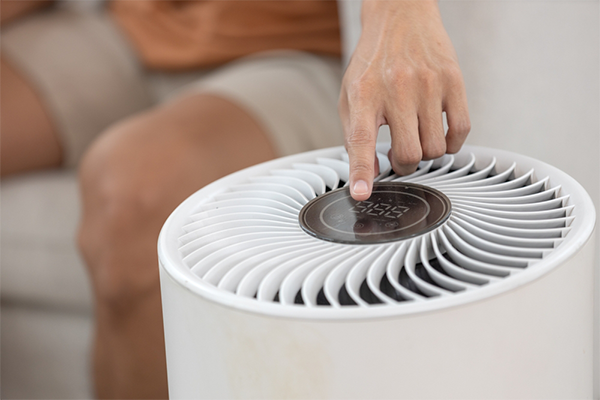
Choosing the right air purifier is simple. Focus on a true HEPA filter, a CADR that matches your room, and a low noise level.
Consumer Reports highlights a few key features to focus on, helping you choose a model that is both safe and effective for your baby's room.
Look for a true HEPA filter
Choose a HEPA filter certified to capture 99.97% of microscopic particles. Don't settle for "HEPA-like" or "HEPA-type," as they don't meet the same standard.
Match the CADR to your room size
CADR stands for Clean Air Delivery Rate. In simple terms, it measures how quickly the purifier cleans a room. Check the product's packaging for the recommended room size and make sure it matches the dimensions of the room where you plan to use it.
For best results, it's a good idea to choose a purifier with a CADR that is slightly larger than your room's size. This ensures it can clean the air effectively without constantly running on its highest, loudest setting.
Check the noise levels (in decibels)
Remember that to be effective, you'll need to run the purifier on a medium to high setting. Choose a model with a low decibel (dB) rating at its highest speed so it won’t disturb your baby’s sleep.
For instance, a unit that operates below 50 dB on its higher settings is generally considered a good choice for a bedroom or nursery.
Consider an activated carbon filter for odors
While a HEPA filter captures particles, an activated carbon filter works to remove gases and odors. If you're concerned about odors from diapers, cooking, or household chemicals (VOCs), consider a model that features a carbon filter in addition to the HEPA filter.
Making the Right Choice for Your Family
Your baby’s respiratory system is still developing, making them more vulnerable to the effects of air pollutants. According to UNICEF, clean air is vital during the first 1,000 days of life—a crucial period for healthy growth and development.
Since their tiny lungs take in more air relative to their body weight than adults do, ensuring clean indoor air is one of the most important steps you can take for them.
You might want to consider getting an air purifier if:
- You live near a busy road or industrial factories.
- Your family has a history of allergies or asthma.
- You have a pet.
- Your home is newly renovated or furnished, which can release VOCs into the air.
- You want an extra layer of protection for a safe, child-friendly home.
While an air purifier is an added expense, the long-term health benefits for your baby often outweigh the cost. A good quality unit can help ensure your indoor air is as clean as possible, giving your child a healthier start.
Do you have concerns about the air quality in your home? Join the ParentTeam Moms and Dads Facebook group and share your questions on the right air purifier for your family.
References
Brągoszewska, Ewa, and Izabela Biedroń. "Efficiency of Air Purifiers at Removing Air Pollutants in Educational Facilities: A Preliminary Study." Frontiers in Environmental Science 9 (2021). https://doi.org/10.3389/fenvs.2021.709718.
Cherney, Kristeen, and Karen Lamoreux. "Do Air Purifiers Actually Work?" Medically reviewed by Angelica Balingit. Healthline, Updated on March 24, 2025. Accessed September 8, 2025. https://www.healthline.com/health/allergies/do-air-purifiers-work.
Loureiro, A., A. Ferreira, and N. Barros. "Systematic Review of the Literature on Indoor Air Quality in Healthcare Units and Its Effects on Health." BMC Public Health 25, 2398 (2025). https://doi.org/10.1186/s12889-025-23445-1.
Mousseau, Jessica. "What to Know About Air Purifiers." Medically reviewed by Sanjay Ponkshe. WebMD, February 23, 2024. Accessed September 8, 2025. https://www.webmd.com/a-to-z-guides/what-to-know-air-purifiers.
Park, H. J., H. Y. Lee, C. H. Suh, H. C. Kim, H. C. Kim, Y. J. Park, and S. W. Lee. "The Effect of Particulate Matter Reduction by Indoor Air Filter Use on Respiratory Symptoms and Lung Function: A Systematic Review and Meta-Analysis." Allergy, Asthma & Immunology Research 13, no. 5 (September 2021): 719–32. https://doi.org/10.4168/aair.2021.13.5.719.
Salve, Harshal Ramesh, Huma Nawa, Sagnik Dey, Anand Krishnan, Preeti Sharma, and Karan Madan. "Effectiveness of Household-Level Interventions for Reducing the Impact of Air Pollution on Health Outcomes – A Systematic Review." Frontiers in Environmental Health 3 (October 25, 2024). https://doi.org/10.3389/fenvh.2024.1410966.
Vijayan, V. K., H. Paramesh, S. S. Salvi, and A. A. Dalal. "Enhancing Indoor Air Quality - The Air Filter Advantage." Lung India 32, no. 5 (September-October 2015): 473–49. https://doi.org/10.4103/0970-2113.164174.











